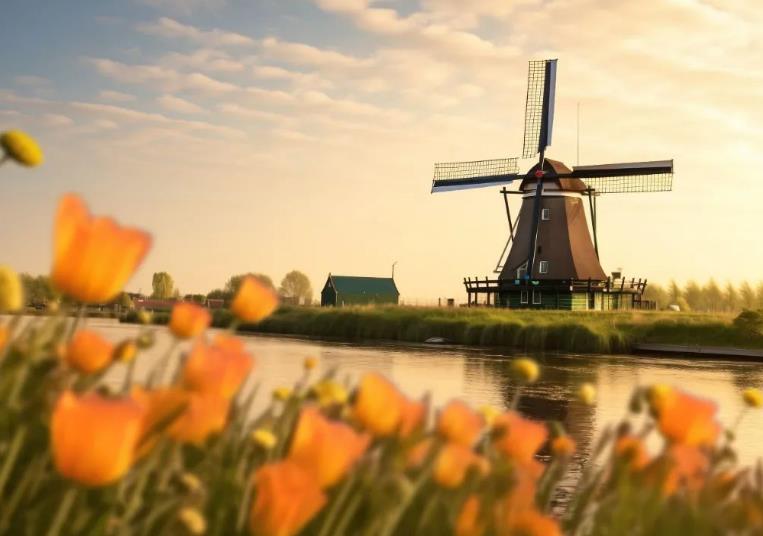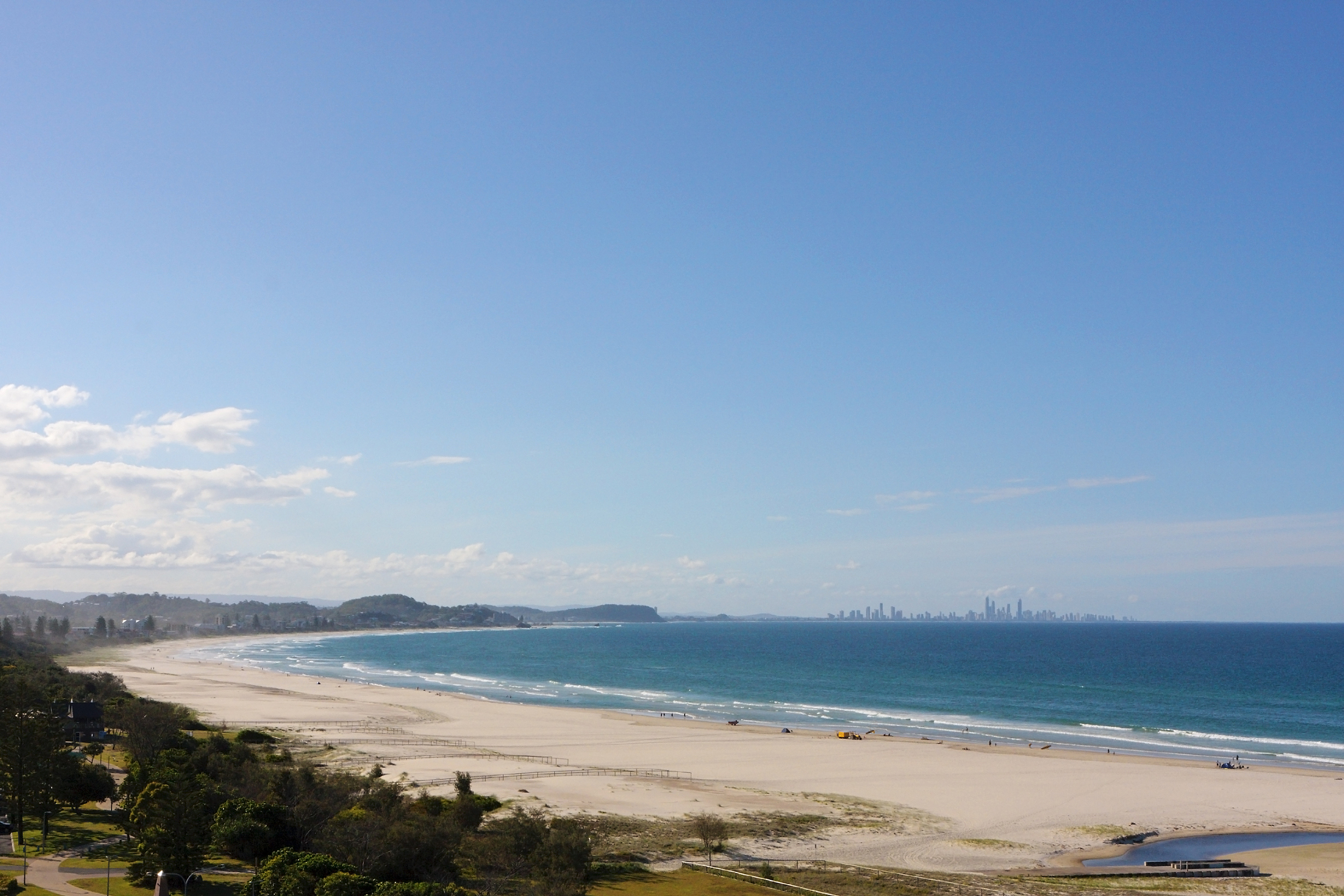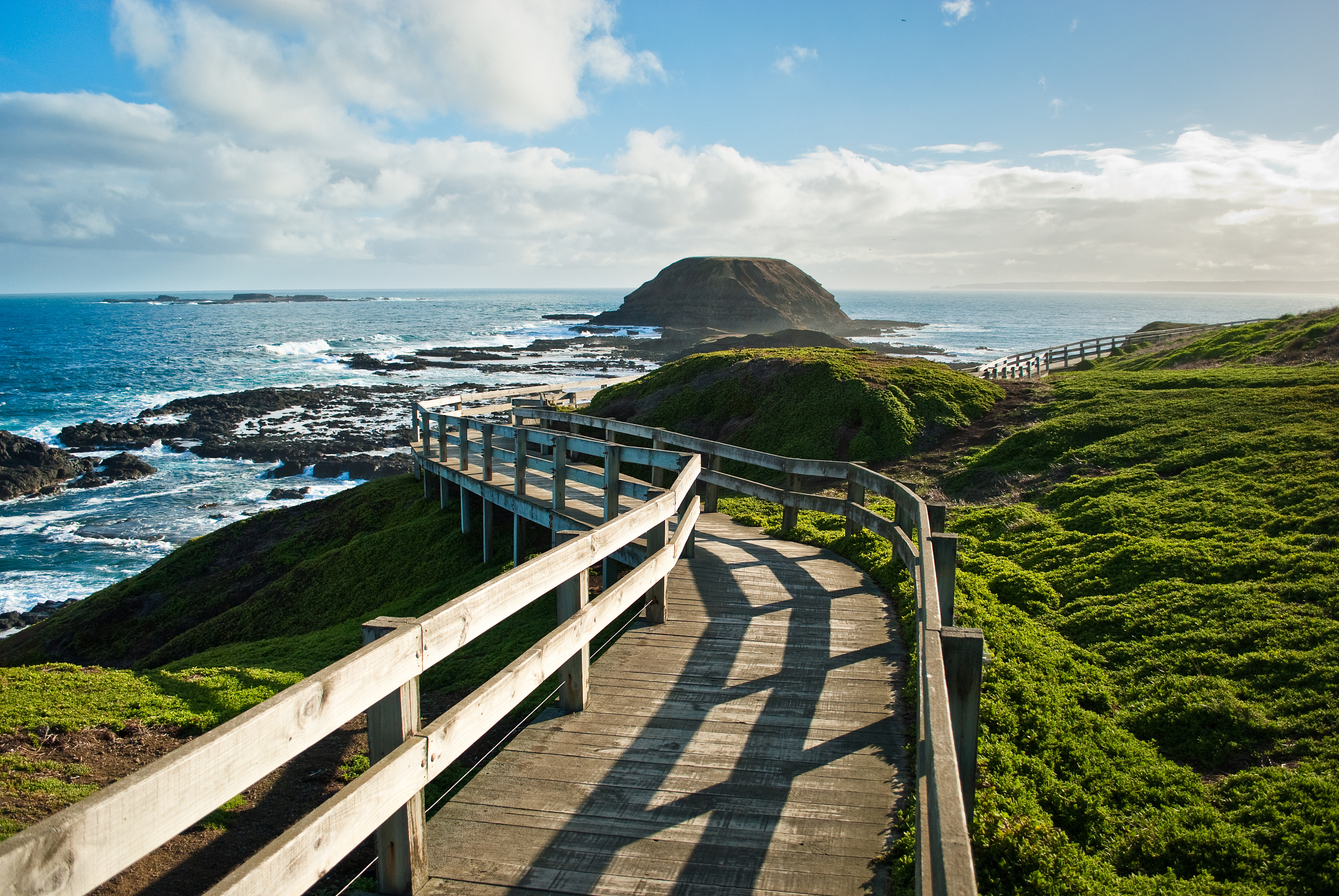https://nz.trip.com/moments/destination-port-stephens-16238/
2025 Port Stephens Travel Guide: Must-see attractions, popular food, hotels, transportation routes (updated in December)
Port Stephens Today's weather
Intermittent clouds 16-25℃
All Trip Moments about Port Stephens
Sand sledding in the desert of Sydney, Australia 🏝️
#Overseas travel There is a desert in Sydney, Australia! It is actually a coastal sand dune, but it is so big that when you go inside, it is really a desert itself,,! I couldn't close my mouth as soon as I got out of the car. It was so amazing, pretty, and nice They said that riding it four times is enough, but it was really hard to go up to the desert I took a lot of pictures and rested in between, so I could keep riding It was definitely hot and hard because it was a desert, so it was really hot and hard because it was very hot, but it was so pretty that I want to go againㅠ I saw that you can ride a camel, but they said it smells a lot I recommend the Port Stephens Tour! #Australia #Australia travel #Sydney #Sydney travelSujung_3Australia Port Stephens Desert Tour Sand Sledding!!
Port Stephens is a popular tourist destination near Sydney, about 3 hours by car from Sydney, with a desert and a beautiful harbor. It is also one of the places where you can experience the magnificent nature of Australia. Sandboarding in the Port Stephens desert is "no pain, no gain", so fun, but the process of going back up to ride was difficult. Still, it was a unique experience to ride a sandboard in the desert for the first time in my life! #portstephens #australiatravel #sydney #sandboarding #portstephens제제의여행일기4Hiking recommendations for beginners in Australia
#AustraliaTravel #PlacesToVisitInAustralia #PortStephen #AustralianNationalPark #tomareenationalpark I went there without much expectation, but I almost regretted it if I hadn't gone. The view from the top was spectacular. It takes about 30 minutes to get to the top of #Tomaree and it's a course that even beginners can easily climb. I recommend it because you can see the Port of Stephen, the coast, and Broughton Islands at a glance. #HikingCourseRecommendation제제의여행일기3Oak Valley Wildlife Park
Oak Valley Wild Park is a zoo in Sydney. They don't keep animals in cages, but let them loose in the wild, so you can interact with them a little freely. I saw a kangaroo for the first time and an alpaca! If you're lucky, you can even take a selfie with a koala :) If you want to see Australian animals, you should definitely go there! I recommend it to those who want to see animals up close, not caged, and to those with children 🤗 #AustraliaTravel #SydneyTravel #YearEndTravel #SoloTravel #Sydney #HotPlaceSeonhwa17#tripaway
#tripaway #tripawayE31***933Sydney Suburb Must-Do Tours
Nelson Bay Dolphin Cruise This popular cruise allows you to observe wild dolphins up close along the coast of Port Stephens. As the boat moves through the calm bay, you can see pods of dolphins swimming around the vessel, making it a highly satisfying experience for both family and couple travelers. Most tours operate for 1.5 to 2 hours. Location: Nelson Bay Marina, Port Stephens Time: Varies by tour operator (usually departs in the morning or afternoon) Stockton Sand Dunes Sandboarding Experience an exhilarating activity on the largest sand dunes in the Southern Hemisphere. Ride a 4WD vehicle to the dunes and enjoy sandboarding down the fine desert sands. The thrill of sliding quickly on the sand and the numerous photo-worthy spots make this tour highly popular. Location: Departing from Anna Bay or Birubi Beach Time: Varies by tour operator (usually 09:00–16:00) Hunter Valley Winery Tour Explore Australia's renowned wine region with a tour that includes wine tasting and vineyard strolls. You can savor local varieties like Semillon and Shiraz with expert sommelier guidance, and many tours also include visits to chocolate and cheese factories. This is a particularly popular healing getaway near Sydney. Location: Hunter Valley, NSW Time: Most tours operate from 10:00 to 17:00.수빈s_oooobSummit Views⛰️
📅 Itinerary Day1:start a day with no other than jumping on a Dolphins watching cruise and swim with dolphins and do other activities and enjoy drinks and pies while on board. Have lunch at Hog’s breath cafe At evenings visit Gan gan lookout for a breathtaking views Day2: get up early and start 2-3 hours Tomaree head summit walk please don’t forget to bring a lot of water and some snack bars. Let me promise you the views and vibes from top of the mountain is amazing. You’d love it. After trekking dip in Zenith Beach but make sure you know how to swim as the currents are pretty strong but if you prefer a calm waves shoal bay beach is great for swimming and relaxing. At evening explore Nelson bay and surrounding areas including salamander bay Day3: sand dunes activities are must Enjoy a camel ride or sand boarding ride. 🏨 Accommodation plenty of options but if you want a budget friendly stay you should book in advanced and avoid weekends as it’s gets very busy and expensive. Port Stephens motel could be good option. 🍴 Food Recommendations for the breakfast no other than magnolia or crest birubi beach For dinner plenty of options 📌 Tips plan in advance Best way to travel around is with your car_TT***81Port Stephens Sand Sledding Tour Guide, Australia 🏖️🏄♂️
#OverseasTravel Port Stephens is a coastal town located about 2.5 hours by car from Sydney, famous for its expansive sand dunes and pristine beaches. 🏜️ Sand Sledding Experience - Located at Stockton Beach Sand Dunes. - This activity involves boarding down massive sand dunes, some over 30 meters high! - While it might seem a little nerve-wracking at first, it's actually quite safe and suitable for all ages. - Since you sit on the board, it's easy to maintain balance, making it a great activity for beginners. 🚐 Tour Process 1. Travel deep into the dunes in a 4WD vehicle → Access is not possible with regular vehicles. 2. Safety briefing and riding instructions from a local guide. 3. Repeat the experience multiple times (depending on your stamina and time, you can try 5-10 times or more). 🕒 Duration - Approximately 1-2 hours - Day tours are also available, including departures from Sydney (typically departing in the morning and returning in the evening). 🎒 What to Bring - Sunglasses & a hat (sun protection essential) - Windbreaker or light long-sleeved shirt (winds can be strong on the dunes) - Water and a light snack - Sneakers are recommended over sandals (the sand is hot and you'll have to climb the dunes multiple times). 🐬 Additional Attractions Port Stephens offers a variety of activities beyond sand sledding, making it a great place to enjoy a variety of activities. - Dolphin Cruise 🐬: Encounter wild dolphins in the ocean - 4WD Safari 🚙: Thrilling sand dune sprints - Kayaking & Paddleboarding 🚣: Relaxing activities on the calm seas - Winery Tour 🍷: Wine tasting at a winery near the Hunter Valley ✨ Highlights - Port Stephens is known as "a place where you can enjoy both Australia's desert and the ocean." - While sand sledding alone is fun enough, combining it with a dolphin tour or winery tour makes for a perfect day trip.예빈트래블❤️🌴 Escape
🌴 Escape to San Felipe for sun, sea, and good vibes—Ramada San Felipe is your hassle-free base for the Mexican Coast! Whether you’re after tranquil off-peak sunsets or fresh seaside flavors, this spot puts you just moments from the beach and the best local eateries. Located right along the main drag, Ramada San Felipe makes it easy to get here (about a five-minute drive from the bus station, or taxis directly at the entrance). The hotel’s welcoming staff greet you with cool drinks and local tips, while rooms offer comfy beds, strong AC, and some stellar sunrise views—imagine waking up to golden light over the Sea of Cortez! 🛏️🌅 Don’t miss the restaurant just off the lobby; it serves up classic Mexican favorites, fresh seafood, and a mean margarita. In the evening, stroll down to the malecón for unbeatable photo ops—rocky shores, palm trees, and the ever-blue horizon make IG-worthy backdrops. If you arrive off-peak, you’ll enjoy quiet beaches and shorter waits at the best taco stands in town. For a local experience, swing by the weekend night market for crafts and snacks. 📸🍤 Insider tip: Book your stay on trip.com for good value and flexible cancellation. For a chill trip, visit on weekdays, when San Felipe is less crowded and the staff can recommend hidden gems nearby. Sneak in an early swim before breakfast, and sample ceviche at “El Nido” downtown. #SanFelipe #RamadaHotel #BeachEscape #SeafoodLover #MexicoTravel_TI***4e1Dolphin watching tour in Sydney
#OverseasTravel #Australia Watch dolphins and go desert sledding in Sydney 📌Port Stephens Tour This tour combines winery visits, dolphin tours, and sandboarding in one. If you enjoy nature and activities, this tour is highly recommended. *,* The captain will give you a signal when dolphins are out, so you won't miss them! The scenery is so beautiful, I highly recommend it. ❗️Notes ✅It's very windy, so a hat is a must. -When sandboarding, the sand and wind can mix together to make your hair tangled. Wear a hat and tie your hair back ㅠ_ㅠ ✅Sandals are recommended over sneakers -Crocs or sandals are recommended because sand can get stuck in your shoes! If you're going in the summer, the sand can be hot, so be sure to bring socks! #SydneyTravel요니포토✅ Desert boarding is a must-do when traveling to Australia🏂
It's fun... It feels like a roller coaster without a seatbelt 💨 📌 Don't miss it! Save! 👉 Share with a friend and go together! 👉 Essentials: Sunglasses + gloves + mask (for sand protection) "Wow... This is a truly breathtaking shot," I thought as I got on, but in reality, I had a mouthful of sand 🥹 #PortStephens #DesertBoarding #AustraliaTravel #AustraliaIndependentTravel #SandEating #TravelCrazy #TravelTips #ReelsRecommendation #LifeShotFailKami_zz1Where to see Australia's adorable animals
1. Snorkeling with sea lions Off the coast of Eyre Peninsula, you'll find a group of curious and friendly wild Australian sea lions that love interacting with humans. While these intelligent marine mammals can be spotted along the southern coast of Australia, joining a tour with Calypso Star Charters is the best way for nature enthusiasts to experience this dream adventure. As you swim through calm shallow waters, sea lions will play and dive nearby, and might even blow bubbles at your snorkeling mask. 2. Snap a photo with smiling quokkas If there's one Australian animal guaranteed to make you smile, it's the quokka. Just a 90-minute ferry ride from Perth, Rottnest Island is home to these adorable creatures. Explore the island on foot or by bike to observe these furry residents. Quokkas are nocturnal, so they're easiest to spot around bushes and grassy areas at dusk. Remember, while they're friendly, they are still wild animals, so interact with care. 3. Spot snoozing koalas Eastern Australia's eucalyptus forests are home to one of the sleepiest residents—the koala. Did you know these marsupials sleep up to 22 hours a day? Raymond Island, located 3.5 hours east of Melbourne, is one of the best places to visit koalas. A 2-kilometer Koala Trail winds through fragrant eucalyptus trees, where you can spot these relaxed creatures in their natural habitat. 4. Cuddle a baby kangaroo Kangaroos thrive in Australia's diverse habitats, with their population nearly double that of humans! From serene beaches to deserts, you'll have plenty of opportunities to see them. At the Kangaroo Sanctuary near Alice Springs, you can cuddle rescued baby kangaroos and learn how to care for and protect them. Guided sunset tours also provide insights into rescuing injured wildlife. 5. Encounter waddling wombats Meeting wombats often requires patience and a bit of luck. These burrowing animals are skilled at blending into their surroundings and are most active at night. However, on Maria Island, wombats are so abundant that visitors joke about tripping over them. A 30-minute ferry ride from Triabunna on Tasmania's east coast will take you to the island, where you can observe wombats, hike, and explore convict history. 6. Spot elusive platypuses Searching for platypuses in the wild requires some strategy. Visit their habitats at dawn or dusk and remain absolutely quiet while observing. The best option is to join a guided tour with experts. Wait-a-While Rainforest Tours, departing from Cairns, takes you into the world's oldest tropical rainforest to track signs of platypus activity. 7. Encounter echidnas Echidnas are shy yet charming Australian animals. These unique egg-laying mammals are known for their excellent digging skills and slow, waddling gait. At Healesville Sanctuary in Yarra Valley, you can find echidnas wandering through the Koala Forest, searching for grubs, ants, and worms. For a closer experience, book the Echidna Experience tour to feed them alongside park rangers. 8. Swim with wild dolphins Australia's extensive coastline is home to at least 14 species of dolphins. To swim with these incredible marine athletes, join Dolphin Swim Australia tours for a world-first experience—strap on a safety harness and be towed by a slow-moving catamaran to swim alongside wild dolphins. Playful dolphins dart around the boat just meters away from you. Tours depart from Port Stephens, a 2.5-hour drive north of Sydney. 9. Meet Tasmanian devils Despite their cute appearance, Tasmanian devils earned their name from their eerie growls, grumbles, and howls. These nocturnal carnivores can only be found in the wild in Tasmania, and they're notoriously elusive. a sanctuary near Cradle Mountain, is dedicated to preserving these loud marsupials. You can join a nighttime feeding tour to observe them in action or participate in the Joey Encounter Tour to learn about devil joeys. 10. Watch penguins return home At dusk, Phillip Island, located two hours south of Melbourne, becomes a stage for the world's smallest penguins as they waddle ashore in large groups, filling the beach. After a long day of fishing, these tiny penguins return from the sea to their nests. While little penguins can be seen along Australia's southern coast from Tasmania to Western Australia, Phillip Island boasts the largest colony. Visit between December and February to hear the chirping of baby penguins in their nests.UTS优耐德旅游Sydney, Australia travel is actually not as expensive as you might think yes with strategy
Just returned from a trip to Sydney, Australia with my sisters, I calculated the expenses and found that I really didn't spend a lot 💰 yeah, now I'll share the strategy for your reference 📸~ Sydney + surrounding 4 day tour so play without stepping on mines ✅DAY1: Visit downtown Sydney ✅DAY2: Blue Mountain Park ✅DAY3: Go to sea in Port Stephens ✅DAY4: Wollongong + Kaima Town 🏬 Accommodation 3 nights in Sydney city, can save time to change hotels ~ It is recommended to stay near Darling Harbor, convenient transportation and many choices! 我 🛒Sydney travel souvenir list🎁 1️⃣ Tim Tams Chocolate Biscuits: Australian national biscuits, crispy, rich chocolate flavor, suitable for friends and family 2️⃣ Jurlique skincare: Australian natural skincare brand, recommended hand cream and rose water 3️⃣ UGG snow boots: Australian classic warm footwear, comfortable and practical 4️⃣ Haigh's Chocolate: Australian high-end chocolate brand, delicate taste, beautiful packaging 5️⃣ Australian red wine: such as Penfolds, Jacob's Creek and other brands, high value for money, suitable for gift giving 6️⃣ Kangaroo and Koala dolls: Cute and Australian, suitable for children 7️⃣ Macadamia nuts: Australian specialty, crispy, healthy and delicious Sydney shopping tips 1️⃣ Australia's GST is 10%, purchases over 300 Australian dollars can apply for a tax refund at the time of departure 2️⃣ A small number of stores support UnionPay, Alipay and Microx Pay, it is recommended to bring a visa card for convenience 3️⃣ Remember to bring your passport when shopping, some stores offer tourist discounts 4️⃣ If time is limited, it is recommended to choose Pitt Street Mall and QVB first, one stop to buy all needs墨客旅行Mokertrip#AugustTra
#AugustTravelSupport #OverseasTravel #Australia #AustralianSydney #Sydney Sydney is truly a romantic place!!! It was so wonderful to experience nature in its raw form 🥹🥹❤️ It also reminded me of how much this country loves animals!_TI***ruSydney and Surrounding Whale Watching Guide All in One Place
🐳 The annual whale watching season has arrived as promised! From May to October each year, over 30,000 humpback whales and southern right whales migrate north along the New South Wales coast. As a key stop on their journey, Sydney boasts numerous prime whale watching spots. Save this guide now and get ready for a magical encounter with these ocean giants. Barrenjoey Headland, Palm Beach Sydney's northernmost "ocean viewing platform" located in Ku-Ring-Gai Chase National Park's Palm Beach. This is the closest point to NSW where whales can be seen before and after their northward migration to calving grounds, and the first place to spot baby humpback whales. Jervis Bay A mid-journey rest stop along whales' 5,000km migration route, where bottlenose dolphins, seals, and little penguins occasionally join the spectacle. Boat tours are the best way to experience whale watching here. South Head, Watsons Bay Just a 25-minute ferry ride from Circular Quay to Watsons Bay. Stroll along the 2km South Head Heritage Trail to reach the perfect land-based whale watching platform at the end. Don't forget to enjoy a meal at Doyles after your whale watching! Port Stephens About 2.5 hours' drive from Sydney. From May to November, humpback whales breach here, their tail fins creating diamond-like sparkles in the water. Recommended to take a 3pm boat tour for a chance to see rainbows in whale spouts. Before returning, visit Stockton Sand Dunes to experience the magical contrast between "ocean and desert" in pure white sands. 🌊 Pack your bags and let Sydney's waves compose your most unforgettable whale watching memories!HAZEL BERRY📍Address:
📍Address: Sunset beachEri_HSand, Smiles, and Screams of Joy at Anna Bay
#springitinerary #AnnaBay #PortStephens #FamilyAdventure #Sandboarding #StocktonSandDunes #AustraliaTravel #BeachEscape #CoastalFun #TravelWithKids Anna Bay turned out to be the perfect family escape — a unique spot where the beach meets the desert and the fun never ends. We came for a chill coastal break, but what we got was an epic day of sandboarding with the kids at the Stockton Sand Dunes, and honestly, we loved every minute. The dunes are massive and surreal, like a mini Sahara right by the sea. The kids were absolutely thrilled sliding down the sandy slopes, squealing with excitement as they went faster with each turn. And not gonna lie — even the adults couldn’t resist grabbing a board and joining in the fun. It’s simple, sandy joy with unforgettable views of the coastline as the backdrop. The best part? Seeing the kids unplug and go full adventure mode. Laughter, tumbles, and a bit of sand in every pocket — totally worth it. Travel Tips and How to Get There: • Best time to visit: Morning or late afternoon to avoid the heat • How to get there: • ~1 hour drive from Newcastle • ~2.5 hours drive from Sydney — a great family day trip or overnight getaway • Tips: • Book sandboarding tours in advance — especially during school holidays • Wear sneakers or closed shoes — the sand gets hot • Bring water, sunscreen, and hats • Pack some snacks or grab lunch at nearby cafes • Great for kids — just make sure they’re ready to climb those dunes after every ride!Kiawchua2Adventure at Port Stephens Sand Dunes
#portstephens #annabay #sanddunes #travel #familytravel #blueskies If you ever get the chance to visit Port Stephens, you have to check out the sand dunes. Honestly, I didn’t expect to be this impressed — it’s like stepping into a whole different world. Endless golden dunes, clear blue skies, and that crazy feeling of standing somewhere that feels so far from everything. We didn’t have a super detailed plan, just showed up ready to explore. Somehow that made it even better. Some people were sandboarding down the dunes (looked epic, might need to try next time!), while others were just walking and soaking up the views. I ended up kicking off my shoes and just wandering barefoot across the soft sand — felt like a little kid again. The coolest part? The light changes everything. In the afternoon, the sand looks almost white under the sun, but as it gets closer to sunset, the dunes start to glow with these deep golden and orange tones. It’s seriously one of the most photogenic places I’ve been. We stayed until sunset and watched the sky turn all kinds of crazy colors. It was peaceful, a little windy, and honestly just pure magic. Definitely one of those moments you don’t rush — just stand there, breathe it all in, and let it be one of those memories. Port Stephens, you’re a vibe. Already thinking about when I can come back. #sydneyLengyiFreedom of endless sand dunes, Anna Bay travelogue
Anna Bay, located in New South Wales, Australia, is a hidden gem about an hour's drive from Newcastle. Sandboarding and 4WD on the endless Stockton Beach sand dunes will give you a special experience. It is a place where you can forget the stress of everyday life and enjoy complete relaxation in nature. If you want a special experience, this is a travel destination I would definitely recommend. Why you should try sandboarding The thrill of sliding on a board on the fine sand is hard to describe in words. The ocean view from the top of the sand dune is a bonus. Anyone can easily enjoy it with simple equipment. 4WD tour, a unique sand desert exploration A 4WD tour where you ride a 4WD vehicle with a local guide and race through the vast desert offers a different kind of thrill. Anna Bay travel tips The sand dunes are very sunny, so sunscreen and a hat are essential! It's a good idea to bring water and light snacks. Sandboarding is more fun on windy days, but wearing goggles will keep sand out of your eyes. #HawaiiFlightEventGod IphonePort Stephen koala sanctuary
🕰️Business Hours: 9-5 📍Address:port Stephan 💰Average Price per Person: 150 💞Reasons to Recommend:nice to have family visit here and quite Enjoying food and quite space to stay overnight Love to recommend couple tripReplyingThe port i
The port is beautiful, 👍Qscesz1What a bea
What a beautiful port.Qscesz1Sydney Port Stephens Desert Experience
#CanadaFlightEvent There is a desert in Sydney Port Stephens that is not a desert, to be exact, it is a sand dune. It is formed so large that many tourists go there to enjoy sand sledding. It takes more than an hour by car from the city, so you have to rent a car or take a tour, and be sure to follow the safety rules. #SydneyTravel고슴도치 루비Murray Winery Dining Recommendations
#CanadaFlightEvent You can also enjoy a delicious hamburger lunch at Murray Winery. The homemade burgers and freshly fried French fries are really delicious. When the weather is nice, it feels good to enjoy the sun while eating on the terrace. Come drink wine and enjoy the outdoors. #SydneyTravel고슴도치 루비Where the sea meets the desert: Port Stephens🇦🇺
When I arrived at Port Stephens, the first thing that caught my eye was the vast sand dunes. I rented a sand sled with the guide's guidance and climbed to the top of the hill. The climb was quite steep and difficult, but the view when I reached the top was really great. I could see the endless ocean and sand dunes at a glance~🏜 Now I prepared the sled, sat on the sand, and started sliding. It was a little scary at first, but as I went down, I could feel the wind hitting my face and the thrill of the speed getting faster. I couldn't help but laugh as I went down, and the sand flew everywhere, but even that was fun🏜 As I rode it repeatedly, my skills improved little by little and I learned how to go down further and faster. I played on the sand, took pictures with my friends, and had a leisurely time lying on the sand and looking up at the sky~🫠 Port Stephens' sand sledding was more than just an activity; it was an unforgettable experience to enjoy with nature.😆 #Overseas travel #Port Stephens #australiatrip #portstephens #Sydney travel #Sydney #Australia travel #Australia hot place #Sydney suburban seaTravelTAKSunset Serenade at Anna Bay Sand Dunes
Get ready to be mesmerized by the Anna Bay Sand Dunes, a natural wonderland just waiting to be explored. From exhilarating sandboarding adventures to breathtaking sunsets, this coastal paradise has it all. In this Trip.com post, I'll share my insider tips on how to make the most of your visit, including: * The best time to visit for optimal sandboarding conditions * Scenic lookout points for unforgettable sunset views * Tips for responsible sandboarding and preserving the dunes So, pack your sunscreen, grab your board, and let's embark on a sand-tastic adventure! #AnnaBay #SandDunes #PortStephens #TripCom #Travel #Adventurecole_lokoyTravel Guide to Port Stephens, Australia
Port Stephens is located in the southern part of New South Wales, Australia. It is a beautiful seaport with rich natural landscapes and cultural and historical resources. With stunning beaches, clear waters, abundant wildlife and unique cultural experiences, it is an ideal holiday destination for tourists. II. Recommended attractions 1. Rose Coast Beach: famous for its golden sand and blue water. Here you can enjoy spectacular coastline scenery, beach sports and water activities. 2. Taloodoo Islands Lighthouse: With its unique historical and cultural heritage, it is a lighthouse that symbolizes historical changes. Visitors can take a close look at this iconic building and experience the rich harbor history behind it. 3. Blue Mountain Cable Car: Located near Port Stephens, it gives you a stunning view of the Blue Mountains. Here you can enjoy the stunning scenery while being shocked by the beauty of nature. III. Activity Experience 1. Diving: In the waters near Port Stephens, you can experience diving or snorkeling and appreciate the beauty of the underwater world up close. There are abundant marine life and coral reefs here, giving you an unforgettable underwater journey. 2. Wildlife Observation: At the wildlife park in Port Stephens, you can observe various wild animals up close, such as kangaroos, koalas, etc. In addition, you can also participate in wildlife protection activities and contribute to protecting the natural environment. 3. Local cultural experience: You can participate in local farm experience activities, such as sheep shearing, making local specialties, etc., to gain a deeper understanding of Australia's agricultural culture and food culture. You can also visit local museums and art galleries to learn about Port Stephens' history and culture. IV. Dining Recommendations In Port Stephens, you can enjoy a variety of delicious local cuisine. Such as seafood dinner, barbecue, local wine, etc. Alternatively, you can enjoy delicious coffee and desserts at local cafés. While enjoying your meal, you can also enjoy the beautiful view of the harbor. 5. Transportation Guide You can choose to take a plane, train or car to Port Stephens. After arriving in Sydney, the capital of New South Wales, by plane from Sydney or Melbourne, you can take a car or train to Port Stephens. You can choose to travel by bus or taxi in the area. In addition, if you like self-driving tours, you can also choose to rent a car and drive around to see the scenery along the way. VI. Travel Tips During your trip, please pay attention to sun protection and keep your body hydrated. Please be safe and follow local ocean safety regulations when on the beach. When participating in outdoor activities, choose appropriate clothing and shoes to ensure safety and comfort. In addition, in order to protect the environment, please maintain environmental hygiene during your travels and comply with local environmental regulations. In short, Port Stephens is a beautiful port city full of natural scenery and cultural history. Whether you like beach sports or exploring the natural beauty, this place has something for you. I hope this travel guide can help you better plan your travel itinerary and enjoy a wonderful travel experience.B3ll@ 3dw@rdsExplore Port Stephens: Your Perfect Australian Getaway!
Hey, guys! Do you want to go on a spontaneous trip? 🌟 Today, I'm going to recommend an amazing place to you - Port Stephens in Australia! It not only has beautiful beaches but also rich wildlife and historical sites. Come and see how to explore Port Stephens with me! 🌅 Best Time to Visit: Spring and autumn are the best seasons to visit Port Stephens, as the weather is cool and pleasant, perfect for outdoor activities. Remember to bring your sunglasses and sunscreen! 🔍 Recommended Attractions: - 🐠 Jervis Bay: A paradise for diving enthusiasts, with crystal-clear waters and a stunning underwater world. - 🦘 Wildlife Park: Get up close and personal with kangaroos, koalas, and other native Australian animals, and experience the charm of nature. - 🏝️ Lighthouse Island: An ancient lighthouse and charming beaches, perfect for taking photos and making memories. - 🐋 Seal Watching Area: Learn about the living habits of Australian seals and observe their daily lives up close. 🎣 Suggested Activities: - 🤿 Diving: Experience the fun of diving in Jervis Bay and explore the mysterious underwater world. - 🏄♀️ Surfing: Challenge yourself and seek excitement and pleasure in the waves. - 🚶♂️ Hiking: Go hiking on Lighthouse Island and enjoy the tranquility and beauty of nature. - 🥪 Picnic: Enjoy a delicious picnic on the beach and feel the pleasure of the sea breeze on your face. - 🐍 Visit the Wildlife Park: Learn more about Australian wildlife and broaden your knowledge. ✈️ Transportation Guide: Fly directly to New South Wales from Sydney or Melbourne, then choose to rent a car or take public transportation to Port Stephens. If you drive yourself, you can also enjoy the beautiful scenery along the way! Overall, Port Stephens is a charming place, with both natural scenery and cultural attractions that are unforgettable. Which attraction in Port Stephens do you want to visit the most? Or is there any activity you particularly want to try? Let me know in the comments! 💬NomadNocturne

Popular Port Stephens topics

2025 Recommended Attraction in Port Stephens (Updated December)
57 posts

2025 Recommended Guides in Port Stephens (Updated December)
51 posts

2025 Recommended Comprehensive guides in Port Stephens (Updated December)
15 posts

Destinations related to Port Stephens

2025 Surfers Paradise Travel Guide: Must-see attractions, popular food, hotels, transportation routes (updated in December)
181 posts

2025 Wollongong Travel Guide: Must-see attractions, popular food, hotels, transportation routes (updated in December)
47 posts

2025 Phillip Island Travel Guide: Must-see attractions, popular food, hotels, transportation routes (updated in December)
27 posts
- 1
- 2
- 3
Post
More recommendations
Popular Trip Moments
How to Enjoy Sydney During the Winter/Spring Festival Vacation from December to February | Port Augusta|The Overlooked Kingdom of Colors | Sydney Suburb Must-Do Tours | The ultimate 11-day Australia autumn tour guide is here! | A roundup of 13-person small group special offer day tours around Sydney | 🐫 Port Stephens Camel Safari: Experience an exotic and magical journey on the sand dunes | Port Stephens Sand Sledding Tour Guide, Australia 🏖️🏄♂️ | Nelson Bay, where I fell in love after going to see dolphins | Dolphin watching tour in Sydney | Port Stephens: Double the Fun with Sandboarding and Dolphin Watching | Summit Views⛰️ | Sun, Sand and Best Friends | Cocktail Moments🍹 | ✅ Desert boarding is a must-do when traveling to Australia🏂 | Where to see Australia's adorable animals | Sydney and Surrounding Whale Watching Guide All in One Place | Nelson Bay 3-Day, 2-Night Nature Adventure | Nelson Bay family holiday | Three Days and Two Nights Trip to Port Stephens | Sydney Weekend Escape: 3 Days & 2 Nights in Anna Bay 🌊🏜️ | Sand, Smiles, and Screams of Joy at Anna Bay | Stockton beach , NSW | Adventure at Port Stephens Sand Dunes | Freedom of endless sand dunes, Anna Bay travelogue | [Sydney suburbs] A place where you can encounter wild dolphins and spectacular views. A day spent in Port Stephens
Recommended Attractions at Popular Destinations
Popular Attractions in Bangkok | Popular Attractions in Manila | Popular Attractions in Tokyo | Popular Attractions in Taipei | Popular Attractions in Hong Kong | Popular Attractions in Seoul | Popular Attractions in Kuala Lumpur | Popular Attractions in Los Angeles | Popular Attractions in Shanghai | Popular Attractions in New York | Popular Attractions in Shenzhen | Popular Attractions in Osaka | Popular Attractions in Singapore | Popular Attractions in London | Popular Attractions in Guangzhou | Popular Attractions in San Francisco | Popular Attractions in Beijing | Popular Attractions in Macau | Popular Attractions in Bali | Popular Attractions in Jakarta | Popular Attractions in Paris | Popular Attractions in Ho Chi Minh City | Popular Attractions in Istanbul | Popular Attractions in Phuket | Popular Attractions in Chicago | Popular Attractions in Seattle | Popular Attractions in Toronto | Popular Attractions in Orlando | Popular Attractions in Cebu | Popular Attractions in Chiang Mai
Popular Restaurants in Port Stephens
Little Beach Boathouse | Pasta Di Porto | Domino's Pizza Raymond Terrace | Bluewater Grill | The Deck Cafe Restaurant & Bar | The Little Nel | Wharf Restaurant Cocktail Lounge & Bar | The Poyer's | Bub's Famous Fish & Chips | Taj Tandoori Indian Restaurant | Agnes High Tea Pavilion | Shoal Bay Country Club | L'il Buddha Asian Cuisine | Michel's Patisserie & Cafe | Gianni's | The Wood Oven - Nelson Bay | Nigronis | Thai at 27 | McDonald's | Shoal Bay Thai | Nelsons Bay Fishermen's Wharf Seafoods | Terrace Bake & Break Cafe Bakery | Heatherbrae's Pies | Newcastle & Port Stephens Game Fish Club | Sandyfoot Cafe & Bar | Valhalla Cafe & Restaurant | Hog's Breath Cafe Nelson Bay | Sharkys | Bites On The Bay | Mavericks on the Bay
Popular Ranked Lists
Top 50 Must-Visit Restaurants in Sanya | Popular Luxury Hotels Near Tenby | Top 10 Best Things to Do in Calgary | Popular Best Things to Do in Dazhou | Top 50 Must-Visit Restaurants in Tianjin | Top 50 Must-Visit Restaurants in Washington D.C. | Top 50 Must-Visit Restaurants in Langkawi | Popular Premium Hotels in Catia La Mar | Top 50 Must-Visit Restaurants in Zhuhai | Top 50 Must-Visit Restaurants in Lijiang | Top 50 Must-Visit Restaurants in George Town | Popular Premium Hotels in Horry County | Top 50 Must-Visit Restaurants in Quanzhou | Top 50 Must-Visit Restaurants in Dali | Top 10 Best Things to Do in Dallas | Top 20 Best Things to Do in Queenstown | Popular Luxury Hotels in Redang Island | Top 50 Must-Visit Restaurants in Los Angeles | Popular Luxury Hotels Near Shkallnur | Top 50 Must-Visit Restaurants in San Francisco | Top 20 Best Things to Do in Geneva | Top 10 Best Things to Do in Hoi An | Top 10 Best Things to Do in Malé | Popular Best Things to Do in Quito | Popular Luxury Hotels Near Saundersfoot | Popular Luxury Hotels Near Conwy | Top 50 Must-Visit Restaurants in Chengdu | Popular Best Things to Do in Addis Ababa | Popular Best Things to Do in Langzhong | Top 50 Must-Visit Restaurants in Ningbo
About
Payment methods
Our partners
Copyright © 2025 Trip.com Travel Singapore Pte. Ltd. All rights reserved
Site Operator: Trip.com Travel Singapore Pte. Ltd.
Site Operator: Trip.com Travel Singapore Pte. Ltd.